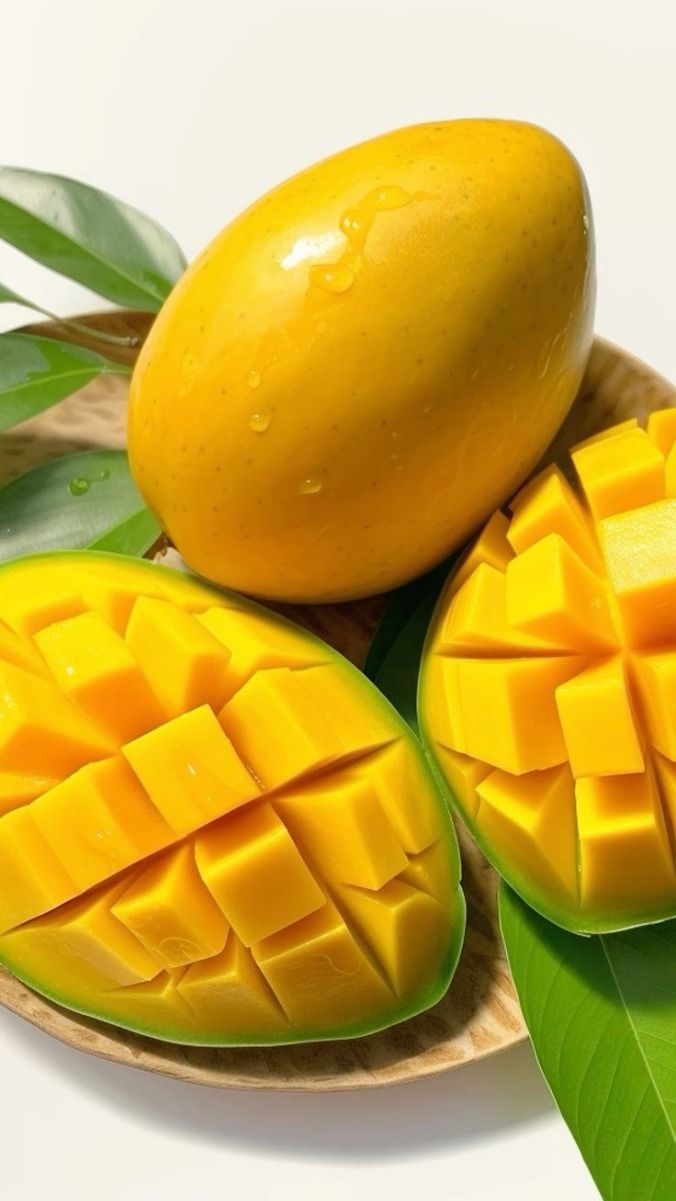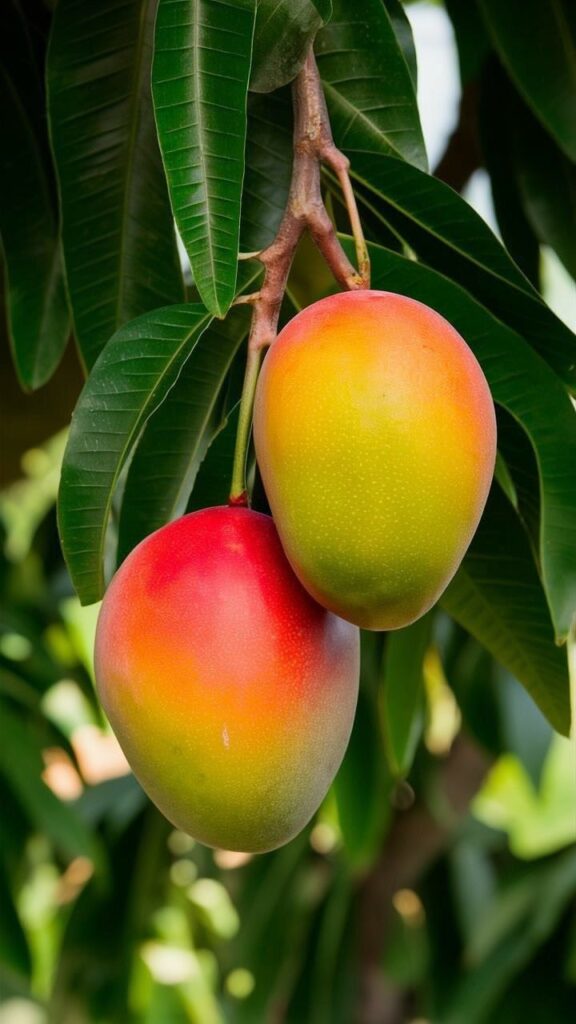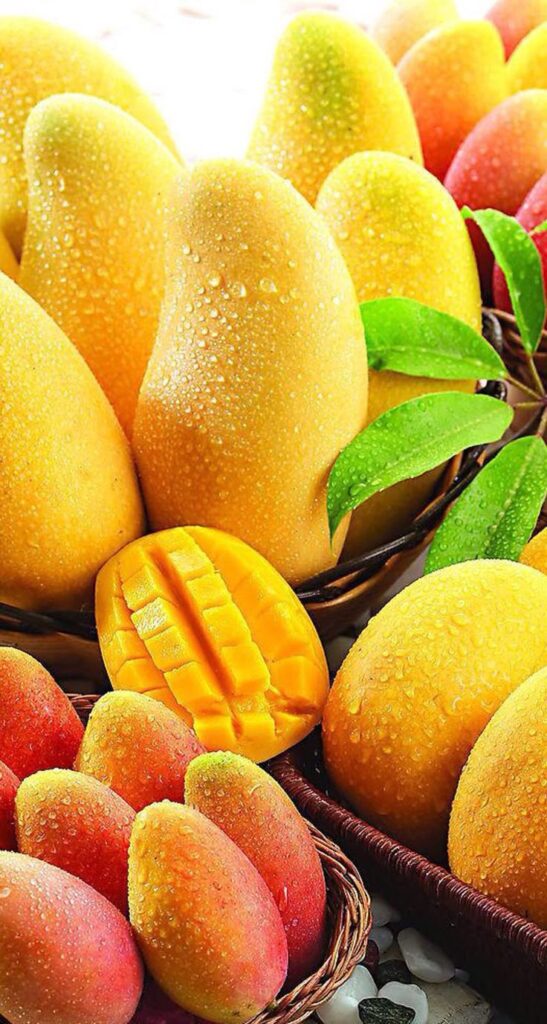
The mango is more than just a fruit — it is a feeling, a memory, and in many ways, a quiet celebration of life. With its rich history, irresistible taste, and global fan base, the mango has rightfully earned its crown as the King of Fruits. Every year, as the warm winds of summer blow across orchards in tropical regions, something magical begins to happen. Trees bloom with fragrant blossoms that soon give birth to this golden delight, and the world prepares once again for mango season — an eagerly awaited ritual across cultures.

A History as Rich as Its Flavor
The story of the mango dates back over 4,000 years. Originating in South Asia — especially regions that are now modern-day India, Pakistan, and Bangladesh — the mango has traveled across continents and civilizations. It has been mentioned in ancient texts, praised in poetry, and gifted among kings and emperors. In Sanskrit, it’s known as Amra, while in Urdu and Hindi, it’s simply Aam — a humble name for such a magnificent fruit.
From Buddhist monks carrying mango seeds on their journeys to Persian traders introducing it to the Middle East, the mango’s journey is one of love, trade, and cultural exchange. Today, it thrives in tropical and subtropical climates across the globe — from the orchards of South Asia to the farms of Mexico, Egypt, the Philippines, and beyond.
A Flavor That Speaks Every Language
What makes the mango so universally loved? Perhaps it’s the balance it strikes so perfectly — a blend of sweet, sour, and floral notes that vary from one variety to the next. Some are buttery and smooth; others are fibrous with a wild, tangy kick. No matter the variety, every mango has a character of its own.
Take, for example, the Sindhri mango from Pakistan — large, bright yellow, and incredibly juicy — or the Alphonso from India, which is often hailed as the “champagne of mangoes” due to its silky texture and deep flavor. There’s also Chaunsa, known for its intoxicating aroma and melt-in-the-mouth flesh. Each variety tells a story, rooted in soil, sun, and centuries of cultivation.
Beyond the Bite: Mango as a Cultural Symbol
In many cultures, mangoes are not just eaten — they are revered. In Hinduism, mango leaves are considered auspicious and are often used to decorate doorways during festivals and weddings. In Buddhist tradition, mango groves were places of meditation. In South Asia, mango season is nothing short of a festival in itself, with families gathering to savor this seasonal joy together.
Songs are written about it. Paintings feature it. Fashion embraces it in the form of the famous “mango motif,” or ambi design, seen in traditional textiles and embroidery. The mango lives in the soul of art, tradition, and heritage.
Health Benefits: Nature’s Delicious Medicine
Behind its decadent taste, the mango also hides a wealth of nutrition. It is packed with vitamin C, vitamin A, folate, and powerful antioxidants like beta-carotene. It supports immune health, improves skin glow, aids digestion, and provides a natural energy boost. Despite its sweetness, it has a relatively low glycemic index, making it a healthy indulgence when eaten in moderation.
Mangoes also contain enzymes like amylases that help break down carbohydrates, making them easier to digest — one of the reasons why mango is often served at the end of a hearty summer meal.

Sustainability & Mango Farming
Behind every mango is a farmer’s careful eye and a deep relationship with the land. Sustainable mango farming is becoming more essential with climate change and increasing demand. Many modern farms now focus on organic practices, water conservation, and eco-friendly packaging.
For consumers, supporting these farms not only guarantees better taste and nutrition, but also supports local economies and environmental health. A mango is no longer just a fruit — it’s a bridge between people and planet.
From Orchard to Table: Ways to Enjoy Mangoes
The versatility of mangoes makes them a favorite across cuisines. You can eat them fresh, slice by slice, with juice running down your hands — the classic summer experience. Or, blend them into shakes and smoothies. Puree them into desserts like ice cream, mousse, or mango kulfi. Add them to salsas, salads, and even savory dishes like mango curry or grilled mango-glazed chicken.
In South Asia, green (raw) mangoes are also used to make pickles, chutneys, and refreshing summer drinks like aam panna. Dried mango slices, mango powder (amchur), and mango pulp also extend the joy of mango season throughout the year.
A Bite of Mango is a Bite of Memory
Ask anyone what mango means to them, and the answers may vary, but they all lead back to joy. For some, it’s the memory of climbing trees barefoot to pluck raw mangoes. For others, it’s the chilled mango shake made by a grandparent. Or the first box of mangoes arriving at home, filling the air with a perfume no bottle could match.
The mango is a connector — of generations, of regions, of flavors and feelings. It is both luxury and simplicity. Royalty and routine. It reminds us that some of the best things in life come straight from the earth, touched by sun and time.
In Conclusion: A Mango Is Never Just a Mango
It is warmth. It is celebration. It is history.
Whether you’re enjoying one alone under the summer sky or sharing a bowl with friends and family, a mango is a reminder to slow down and savor.




